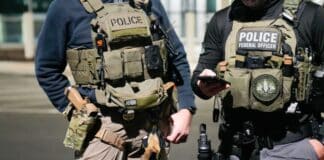South Carolina is set to become the first state in 15 years to carry out an execution by firing squad. The execution of 67-year-old Brad Sigmon is scheduled for March 7, marking only the third time in nearly five decades that this method has been used in the United States.
Sigmon was sentenced to death for the 2001 murders of his former girlfriend’s parents in Greenville County. He confessed to bludgeoning them with a baseball bat while attempting to kidnap his girlfriend and later planning a murder-suicide. With all legal avenues nearly exhausted, his last remaining option is to seek clemency from Governor Henry McMaster.
South Carolina law gives death row inmates the choice of execution by lethal injection, electric chair, or firing squad. However, Sigmon’s attorneys are seeking a postponement, arguing that the state has not provided sufficient information on its lethal injection procedures. A recent execution by lethal injection on January 31 raised concerns about the dosage and effectiveness of the drugs used. Defense lawyers argue that if the drugs are improperly administered, the inmate could suffer prolonged agony due to fluid buildup in the lungs.
Sigmon’s legal team has also condemned electrocution as an inhumane method of execution, likening it to being “cooked alive.” In contrast, a firing squad execution involves the inmate being strapped to a chair in the death chamber, with a hood placed over their head and a target marked on their heart. Three trained volunteers fire from a distance of about 15 feet, using live ammunition.
Since 1976, only three executions by firing squad have taken place in the U.S., all in Utah, with the last occurring in 2010. If carried out as scheduled, Sigmon’s execution will mark South Carolina’s first use of a firing squad and reignite debates over capital punishment methods in the state.






